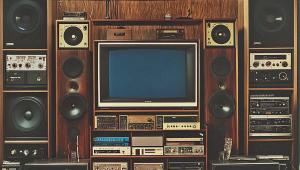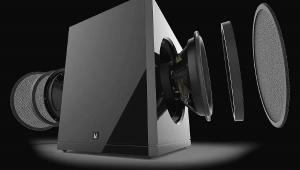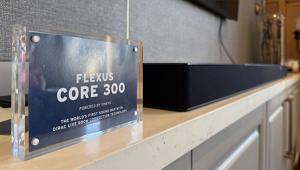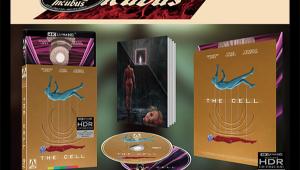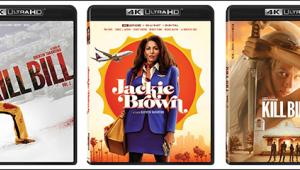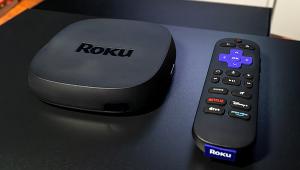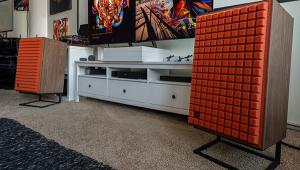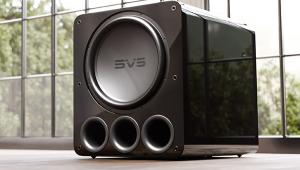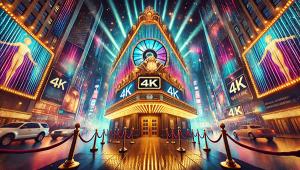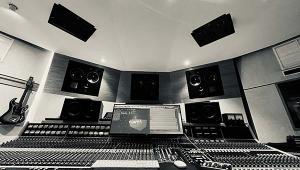Samsung UN46C8000 3D LED HDTV and BD-C6900 3D Blu-ray Player Page 2
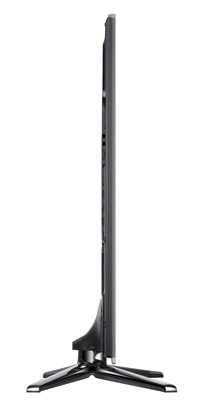
SETUP
The UN46C8000 offers a handful of picture presets, the settings for which can be tweaked and stored on a per-input basis. You can also create custom settings for both 2D and 3D signals - a necessity given the shift in picture brightness and color that occurs when you don Samsung's 3D shades. Movie is a good adjustment starting point, since that preset calls up an accurate grayscale and shuts off the TV's overwhelming array of picture-adjustment options (Eco light sensor, Black Tone, Dynamic Contrast, etc.) by default.
Outside of basic picture settings, my own adjustments were limited to switching the Film Mode to Auto 1 and engaging the 10-point White Balance control to make fine grayscale tweaks. I also spent some time fiddling with the set's 3D-centric adjustments. These include Image Depth, which controls the "Zaxis" for 2D-to-3D conversion, and 3D Viewpoint, 3D Optimizer, and Picture Correction, all of which contribute toward minimizing ghost images, or "crosstalk" (overlap of left- and right-eye images in 3D pictures).
An irritating reality of the new 3D Blu-ray Disc standard is that HDMI 1.3 and earlier A/V receivers and processors aren't able to switch signals in the new format, meaning most people will need to make a direct connection from the player's HDMI output to their new 3D-capable TV. Some Blu-ray Disc player manufacturers have chosen to deal with this by incorporating dual HDMI connections (v1.4 for video and a second one for audio) on their machines.
Samsung's BD-C6900 doesn't provide dual HDMI jacks, but it does have a 7.1-channel analog audio output. So, if you don't happen to own a brand-new HDMI v1.4 A/V receiver, this connection will still let you take advantage of high-rez Dolby TrueHD and DTS-HD Master Audio soundtracks when the BD-C6900's single HDMI output is connected to the TV. The player's setup options are limited: You can only select Large or Small speaker size for each channel, and there are no additional crossover-frequency or channel-delay adjustments. But if your receiver is a higher-end model that can handle those functions for incoming multichannel analog signals, you'll be in good shape. Alternately, you can use the player's optical digital output to route standard Dolby Digital/DTS sound to your A/V receiver or processor - something I chose to do for convenience's sake during my test.
2D PERFORMANCE
Before launching into the third dimension, let's talk regular 2D TV performance. The last edge-lit Samsung LED TV that I tested (UN46B8000; September 2009) displayed satisfactory black levels and shadow detail for a set that lacked local dimming. The UN46C8000's Precision Dimming (a feature that's controlled via the Smart LED setting in the TV's menu) bumps performance up a notch by dimming or switching off entirely the lamps lining the set's edges to track local variations in picture brightness.
Its value was immediately evident when I watched a Blu-ray Disc of Bad Lieutenant: Port of Call - New Orleans. In a scene that takes place in the aftermath of Hurricane Katrina where Officer McDonagh (Nicolas Cage) ponders releasing a prisoner from his near-submerged cell, the black, snakeinfested water in the foreground looked solid and showed plenty of dark-gray detail. And in a subsequent scene where a doctor in a light-bathed office treats McDonagh, both men's white shirts displayed a wide range of fine highlights.
The Samsung's accurate color rendition proved to be another of its strong points. In a later scene from Bad Lieutenant where the ethically challenged policeman smokes illegal substances in the apartment of his girlfriend (Eva Mendes), the green houseplants in the background looked completely natural, and good delineation could be seen between his pale, pipe-puffing visage and her goldenbrown skin. And when I next watched The Lovely Bones, the Samsung proved equally adept at conveying the almost surreally vivid Kodachrome tones of the 1970s suburban setting in the film's early scenes.
While I was mostly impressed by this TV's 2D performance, some areas could use improvement. Like other LED-lit TVs I've tested, the UN46C8000 had a limited viewing angle - its picture contrast and color accuracy took a hit when I shifted more than 15° off from the center line in either direction. Also, during letterboxed 2.35:1 aspect ratio movies like The Lovely Bones, the black bars at the bottom of the screen didn't always come across as a solid black due to a "flashlight" effect wherein faint beams of light poked out from the screen's lower corners.
Samsung touts the BD-C6900 as being engineered for "Ultra Fast Play," and speed tests bore that claim out. It took just 3 seconds from the moment I pressed the player's power button for the tray to open up and swallow discs. Blu-ray titles with no BDLive features took just 6 seconds to load up and display an image onscreen, while BDLive discs took around 12 seconds to load. To put these numbers in context, a Samsung BD-P1600 player that I tested for our September 2009 issue took roughly twice as long to perform the same functions.
The BD-C6900 also gets an A on its videoprocessing report card. It passed all upconversion tests from the HQV Blu-ray and DVD test discs, and excelled on the video performance workouts found on the AVIA Pro and Spears & Munsil discs as well, including S&M's Chroma Multiburst pattern; I've seen Blu-ray players that cost many times the Samsung's $400 price trip on that test.

3D PERFORMANCE
With 3D TV still in its just-birthed stage, suitable content is tough to come by. Still, I had three different programs to work with: the 3D Blu-ray Disc of Monsters vs. Aliens, a demo 3D Blu-ray from another manufacturer, and a 3D recording of the Masters golf tournament that my cable provider quietly made available in its free on-demand video library.
Not surprisingly, Monsters vs. Aliens offered the most satisfying 3D experience by a long shot. After pressing the glasses' power-on button, I loaded the disc into the BD-C6900 and prepared myself for things to poke out of the screen. Pretty much from the get-go, I had a convincing sense of staring into a three-dimensional world, with strong separation between spatial layers in the image. The film leans on 3D movie clichés in a wink-wink sort of way, offering up plenty of shots of stuff seeming to jut out of the screen. In a scene where a meteor crashes in the vicinity of blushing bride-to-be Susan (causing her transformation into Ginormica), debris from the impact appeared to spew forward from the Samsung into my personal space. And the picture's startlingly crisp resolution only made the experience that much more "real."
The other material I watched, while not as engaging as Monsters vs. Aliens, definitely had the 3D thing going on. A beauty shot of the Grand Canyon from the demo disc displayed a remarkable sense of depth. Even the Masters footage conveyed a convincing sense of 3D space, although the lower resolution of its "side-by-side" image format - not to mention the video-compression noise most likely introduced by my cable provider - limited its impact and appeal, especially when compared with the crisp 3D Blu-rays.
I didn't have much luck at first with the set's 2D-to-3D conversion feature; switching it on for random movies or TV shows didn't generate satisfying 3D experiences, and playing with the set's depth control only seemed to make objects look blurry. But I hit the jackpot with a Discovery HD Channel showing of a doc called Bugs! A Rainforest Adventure that was originally produced in IMAX 3D. Landscape shots with foreground mist and mountains in the background looked strikingly 3D-like. And a scene of a butterfly slowly emerging in time-lapse from a cocoon had a dramatic quality that the same footage lacked when watched in regular 2D.
The UN46C8000's 3D capability captured my interest; if additional real 3D content were available, I would have been happy to keep watching in that mode. But there were also some problems in the third dimension. A persistent issue was ghost images (crosstalk). Playing with the 3D picture adjustments in the picture setup menu sometimes helped, but it often seemed like I was just pushing ghosts from one section of the screen to another. As someone who's used to watching the latest 3D releases on a ginormous IMAX screen at my local multiplex, I also felt that a 46-inch screen was way too small for watching 3D at a typical TV viewing distance (around 7 to 8 feet). I never once felt any of the 3D-induced nausea that others have claimed, but I did experience eyestrain that could most likely be traced back to peering through 3D eyewear at a too-small picture.
- Log in or register to post comments









